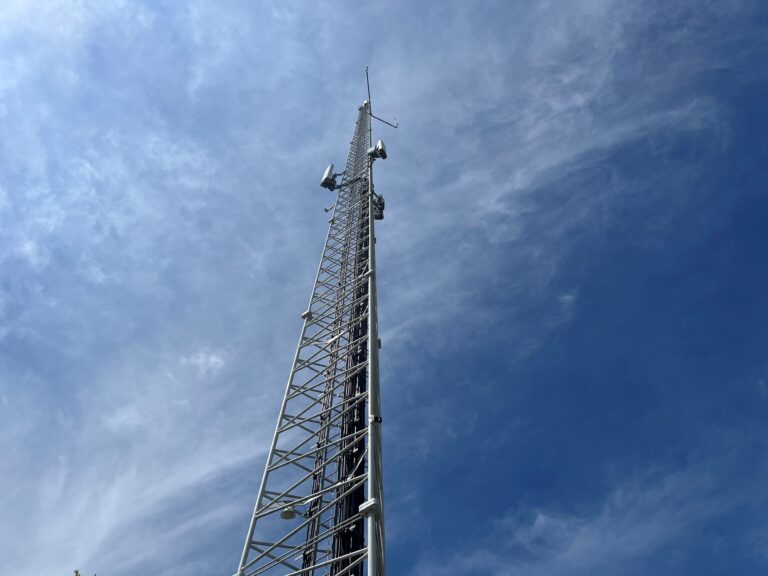The 5G frequency auction in the Netherlands has been postponed again. The auction should have taken place last month. KPN, T-Mobile and Vodafone would like to use the 3.5 GHz frequency band for 5G, but this is not possible at the moment. The National Frequency Plan that allocates available bandwidth, does not work. At the moment, providers, satellite stations, local license holders and the networks of, for example, the port of Rotterdam and Schiphol, are in each other’s way on the 3.5 GHz frequency bands. The Ministry of Economic Affairs must now review the frequency plan and an independent advisory committee will have to enter into discussions with all stakeholders.
5G has been offered by the providers for two years now via a lower frequency band (700 MHz), in this frequency band there is limited space and you will notice little difference with 4G/4G+. More bandwidth is needed for higher speeds, around 3.5 GHz, 300 MHz is available for national networks. In theory, blocks of 100 MHz are therefore available for the three national providers. In this article we will discuss the various reasons that cause the auction frequency to be postponed.
Inmarsat uses the 3.5 GHz frequency band for emergency signals
The 3.5 GHz frequency band is already very busy, satellite provider Inmarsat is located in Burum, where the 3.5 GHz frequency band is used to listen to emergency signals from international ship traffic. Inmarsat was always “protected” by the intelligence interception station. The AIVD and MIVD listen in on satellite traffic in Burum, which is why no network in the north was allowed to interfere with that frequency. This interception station will move to a secret location abroad on September 1, and from there the north will be given space for 3.5 GHz for 5G.
Local private network are clashing with the national providers
In addition to the 5G puzzle in the north, the three national providers are also concerned about local, private networks, smaller parties such as municipal governments and companies, which have a license until 2026 to offer services in the 3.5 GHz frequency band. You can think of broadband internet, a mobile network as a replacement for cable or fiber optic or wireless surveillance cameras. The three major providers now have to start drawing circles around each local network to mark what is prohibited area, this creates holes in the coverage. To solve this problem, the cities will be switching frequencies in the near future, but this will entail considerable costs and it will take a while before this migration is carried out.
The frequency distribution causes dissatisfaction
As we established earlier, 300 MHz of the 3.5 GHz frequency band goes to the three national providers, 100 MHz goes to private networks, the 100 MHz is divided into two blocks of 50 MHz, on either side of the national providers. large companies such as Schiphol or container terminal operator ECT must operate in this bandwidth. In the port of Rotterdam there is dissatisfaction with the space for private networks, they prefer 100 MHz continuous bandwidth. This has technical advantages, as frequency blocks adjacent to local networks need more adjustments, the splitting of the private blocks is not desirable for most parties and is one of the factors from which the 5G frequency auction has been postponed.
Networks must take each other into account
It is more favourable for providers to create a network with a few powerful antennas, but these quickly ‘blow’ too far and can cause interference. Many small antennas work more accurately, but this is more expensive and requires more maintenance. Margins are always built into channels, this is done to keep neighbouring networks apart. The piece of no man’s land that lies between the networks is at the expense of the available bandwidth, by weakening channels or setting them up elsewhere, you take your neighbours into account. 5G networks also synchronize among themselves, so that they do not get in each other’s way. There is a difference between synchronization between the national providers and local networks, the national providers are set up to allow users to download more data than upload. But many business applications are set up for uploading, such as CCTV, making it difficult to reconcile public and private networks.
The network can cause disruptions
Even at a long distance under the right conditions, radio signals in the same band can interfere with each other, for example, the German 5G network can cause interference in the satellite reception of Friesland. At the beginning of this year, airlines also sounded the alarm in the US that the roll-out of 5G would disrupt the operation of aircraft altimeters.
The future of 5G
Although the adjustments to the initial frequency plan were enforced by Inmarsat, the advisory committee has entered into discussions with all kinds of stakeholders in recent months. The committee issued advice on the Inmarsat issue in May, Inmarsat is planned to move to Greece, as long as this location is not ready, the satellite company has a limited space (80 Megahertz) to continue its activities. The 5G frequency auction will take place on December 1, 2023. The providers indicate that the national roll-out of 5G will only be economically feasible after 2026.
For more information about the 5G frequency auction, you can contact us via telephone number 085-0443500 or by mail to info@thingsdata.com.
Need reliable IoT SIM cards? Request our test kit for 3 free SIMs with 100 MB data for 3 months. Experience seamless IoT connectivity today.
Looking for a reliable IoT partner? Download our brochure for instant access to valuable insights about our services and IoT solutions.
